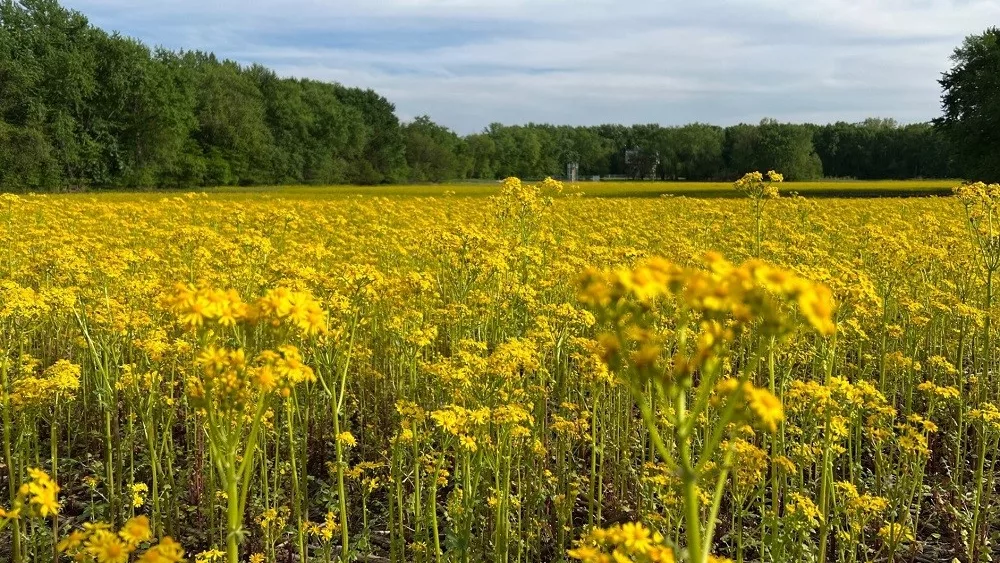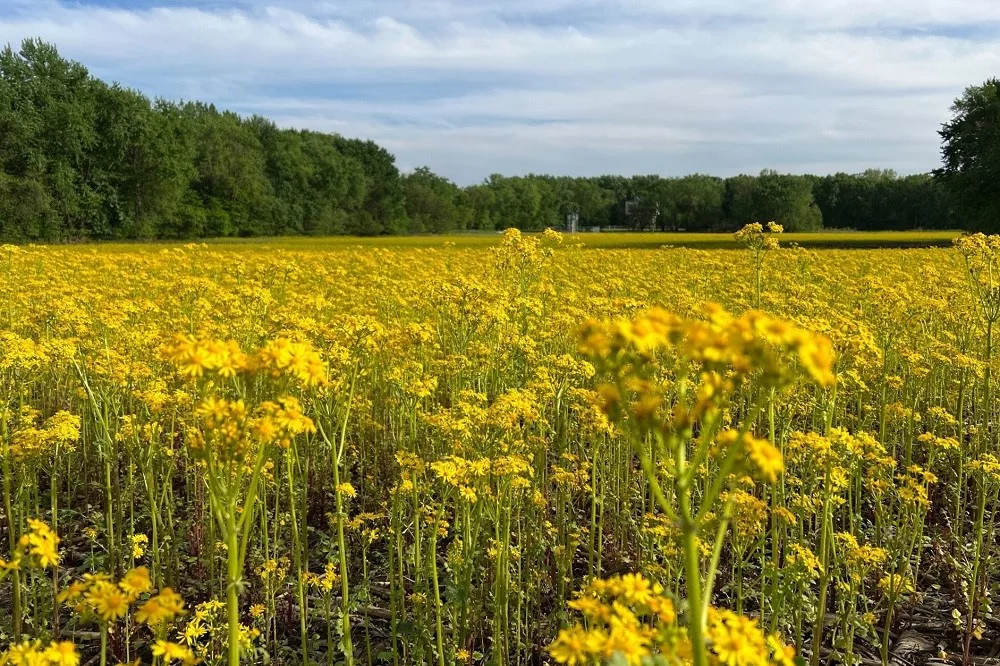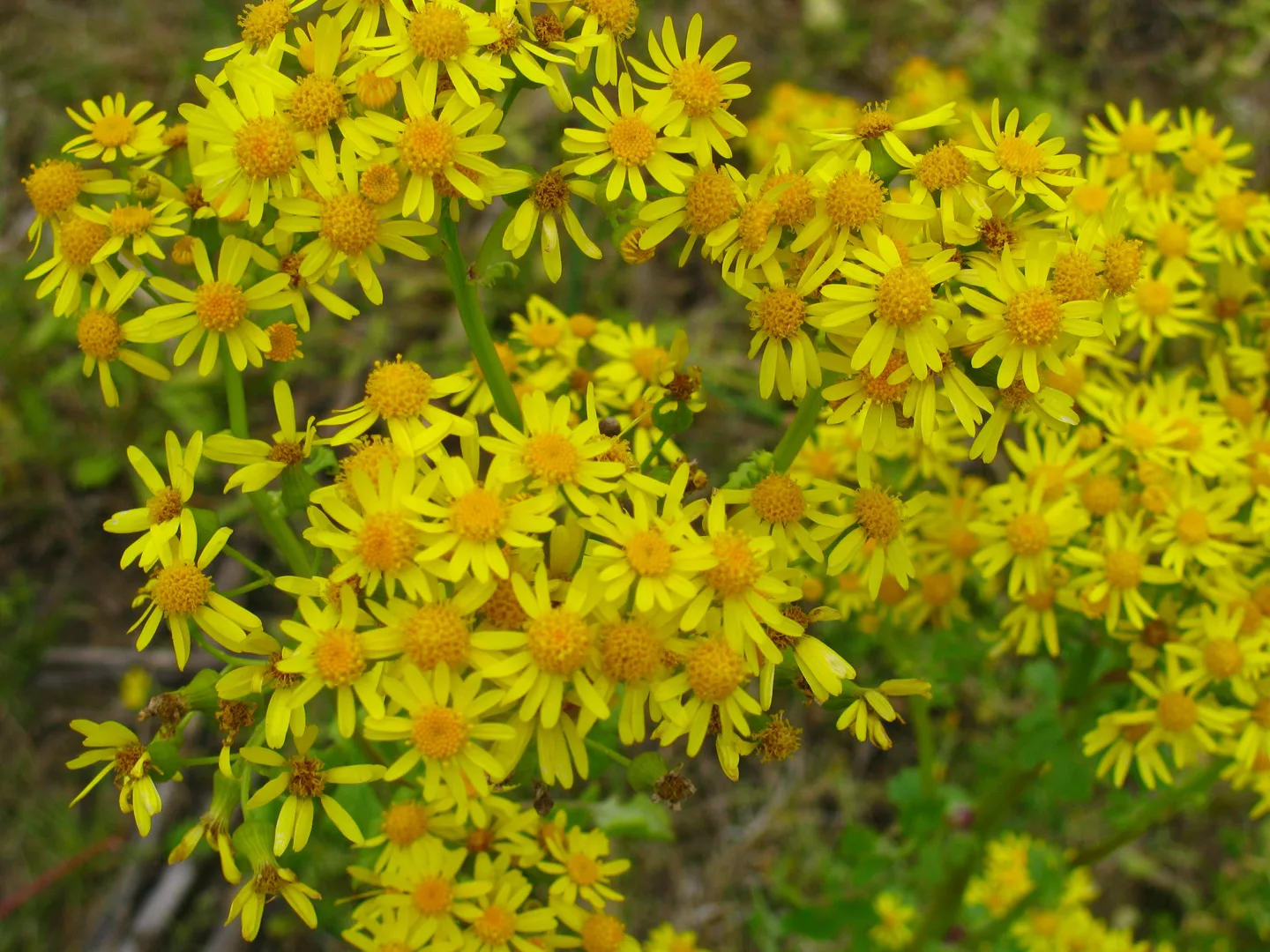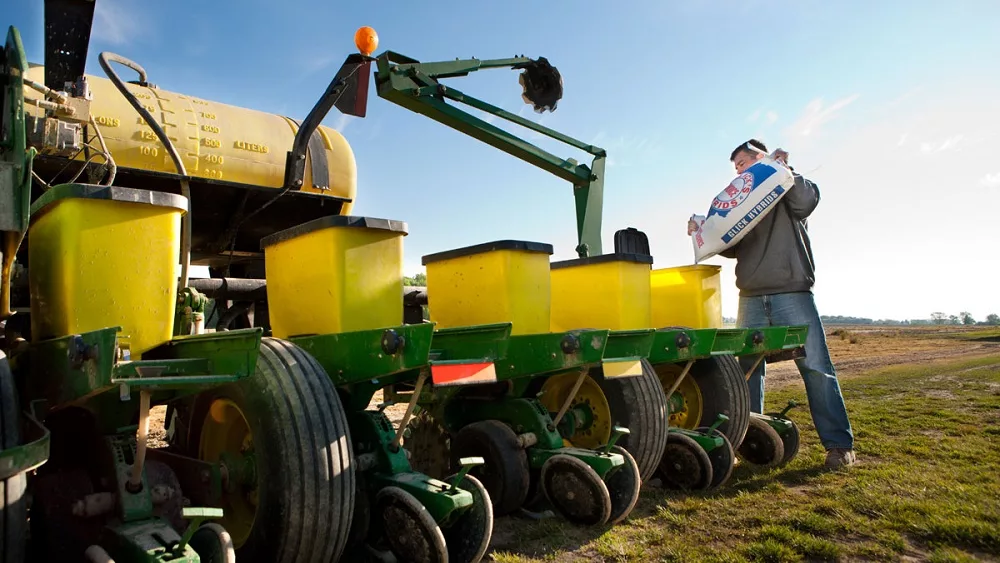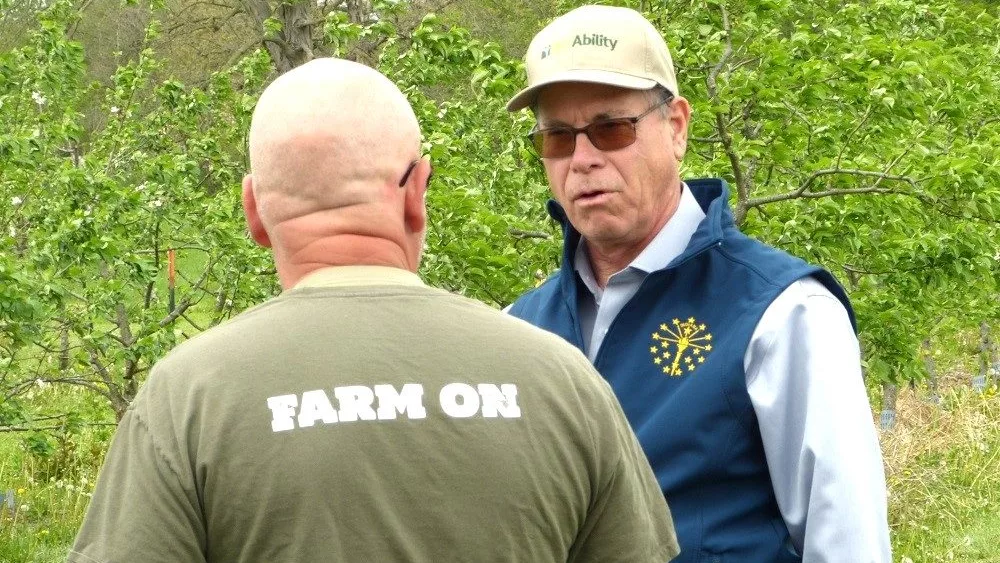If you travel rural roads across Indiana and around the nation for that matter, you’ve probably noticed a lot of yellow flowers in the fields. The bright yellow in fields stretches from Texas east to Florida, northward along the Atlantic coast to Virginia, and back west to Nebraska. The growth is actually a weed called butterweed.
“Butterweed is a species that typically germinates and emerges in the fall. It will overwinter as a small rosette of leaves, and then about late April to early part of May it bolts and produces these very bright, showy yellow flowers,” says University of Illinois Weed Scientist Aaron Hager.
The bad news for farmers is that because the plant has flowered it is going to get much harder to control.
“So when you see the flowers of the winter annual species that typically means that these plants are nearing completion of their life cycle,” he says. “So we see the bright yellow flowers now and in a few weeks a lot of those yellow flowers would be replaced by little white tufts of actual seed at the top of the plant where the flower is right now. So many times on the larger plants, simply because of large they are, how close they are to completing their life cycle, some of the burndown herbicides can tend to struggle a bit more compared with the level of control we see when these applications are made say during the rosette stage or early growth stages.”
Farmers always seem to find a way to control weeds and they’ll find a way with yellow butterweed, too.
Source: NAFB News Service

